Results
-
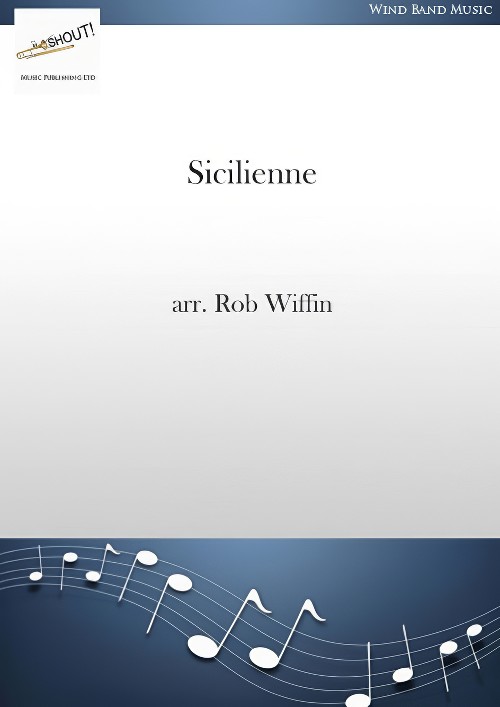 £33.95
£33.95Sicilienne (Concert Band - Score and Parts) - Wiffin, Rob
Rob Wiffin heard this played by the young cellist Sheku Kanneh-Mason as part of his short recital at the wedding of Meghan Markle and Prince Harry in May 2018. He was immediately struck by the simple charm of the music and decided to arrange it for band. In doing so he thought it best to just touch it gently rather than over-arrange it. Apart from changes of colour and a little bit of counter-melody the tuneful elegance of the music appears just as in the original solo for violin or ?€cello. The music is attributed to the Austrian composer and musician Maria Theresia von Paradis (May 15, 1759 ?€" February 1, 1824) but, according to Grove Music, this is false and it was possibly composed by violinist Samuel Dushkin (1891-1976), based on Weber's Romanze from his Violin Sonata Op.10, No.1. Whoever it may have been composed by, it is a highly attractive piece.Duration: 2.5
Estimated dispatch 7-14 working days
-
 £118.90
£118.90Sing Sang Sung (Concert Band - Score and Parts) - Goodwin, Gordon - Gilje, Reid
Sing Sang Sung is inspired by Sing Sing Sing from the legendary 1938 Carnegie Hall Concert by Benny Goodman & His Orchestra. The famous Jungle Groove presented by drummer Gene Krupa and the opening riff from the 1938 performance is retained in this brilliant, swinging tune composed by Gordon Goodmin. The style changes from swing to jungle groove (with extensive use of tom-toms), is essential for both these tunes. Duration: 4.30
Estimated dispatch 7-14 working days
-
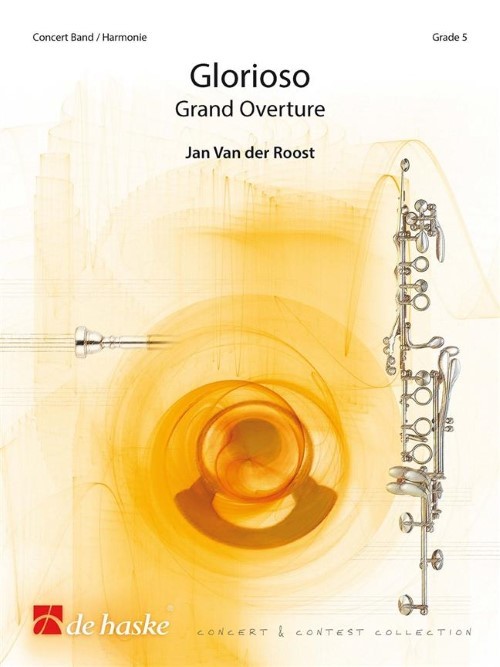 £224.99
£224.99Glorioso (Concert Band - Score and Parts) - Van der Roost, Jan
Glorioso was commissioned by, and is dedicated to, the Siena Wind Orchestra. The work opens after a short aleatoric intro, with an energetic and brassy one tone fanfare. The note F acts as an omnipresent note, and is also used as a bridge into the second, rather static movement. A noble sounding theme leads to an impressive climax, shortly followed by the spectacular and virtuoso finale, which is built on the musical elements that have been heard before. Stylistically, this sparkling finale is clearly influenced by Dmitri Shostakovich, hence the use of the famous signature used by the Russian Master: C, D, E flat, B (or C flat). A glorious finish to a special work that highlights various facets of the modern concert band.Duration: 15.30
Estimated dispatch 7-14 working days
-
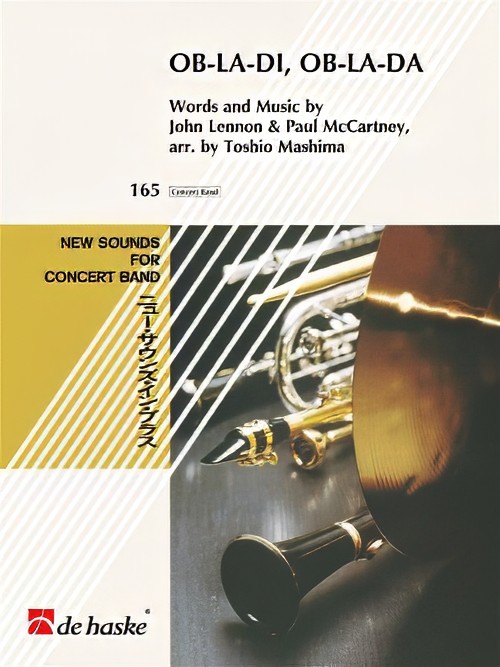 £104.99
£104.99Ob-La-Di, Ob-La-Da (Concert Band - Score and Parts) - Lennon & McCartney - Mashima, Toshio
Ob-La-Di, Ob-La-Da is a song by The Beatles from their 1968 album The Beatles (often called the 'White Album'). Although credited to Lennon-McCartney, the song was written solely by Paul McCartney. The tag line "ob-la-di, ob-la-da, life goes on, brah" was an expression used by Nigerian conga player Jimmy Scott-Emuakpor, an acquaintance of McCartney. This high profi le 'New Sounds' arrangement by Toshio Mashima is perfect to use as an encore for your next concert! Duration: 4.15
Estimated dispatch 7-14 working days
-
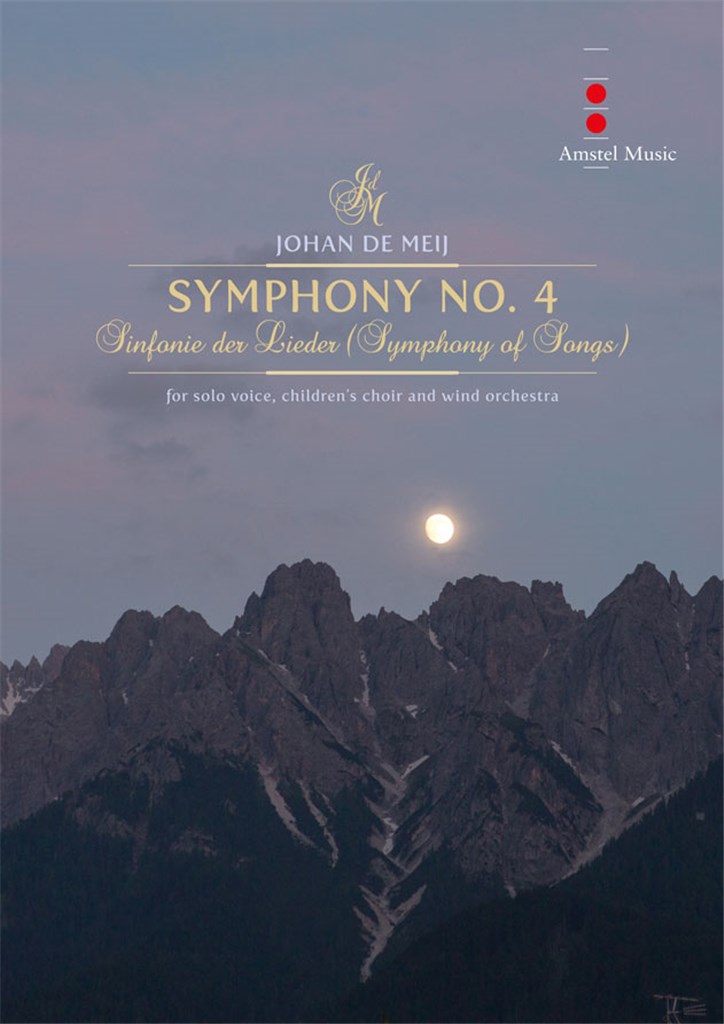 £1.95
£1.95Symphony No.4: Symphony of Songs (SATB Choral Octavo) - De Meij, Johan
Johan de Meij's 4th Symphony for solo voice, children's choir and wind orchestra is inspired by a variety of 19th century German poems.The first three movements use lyrics from the same source as Gustav Mahler did earlier: Kindertotenlieder by Friedrich Ruckert.:Ein Jahr ist nun geschwundenWenn zur Thur hereinWiedersehnThe second half of the symphony continues on the death theme, using a poem by Heinrich Heine (Two Brothers). The last two songs, Early Spring and Song of the Harlequin by Hugo von Hofmannsthal are a metaphor for rebirth, new life and hopeZwei Bruder (Heinrich Heine)Vorfruhling (Hugo von Hofmannsthal)Liedchen des Harlekin (Hugo von Hofmannsthal)Duration: 30:00
Estimated dispatch 7-14 working days
-
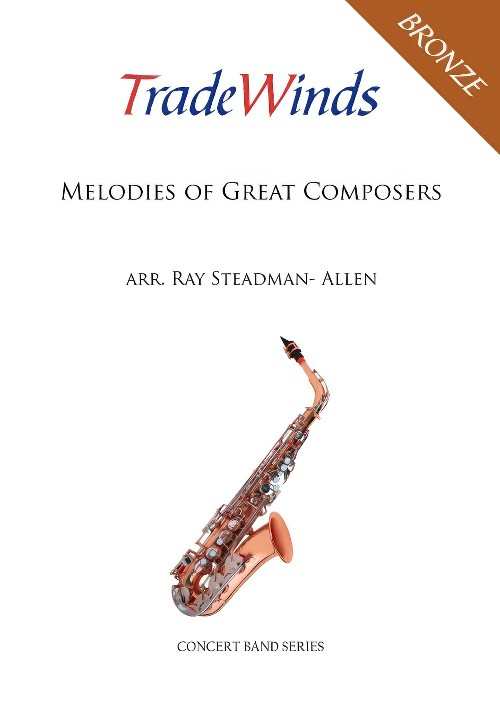 £34.95
£34.95Melodies of Great Composers (Concert Band - Score and Parts) - Steadman-Allen, Ray
Ray Steadman-Allen has selected 4 melodies, composed by some of the great composers, and linked them together to form a medley that will appeal to many a listener. 'Soldier's March' by Schumann, Haydn's 'Aria', 'Waltz No. 3' by Schubert and the exciting theme from 'William Tell' by Rossini have all been featured to make both a interesting and educational medley for young bands.
Estimated dispatch 7-14 working days
-
 £6.95
£6.95Melodies of Great Composers (Concert Band - Score only) - Steadman-Allen, Ray
Ray Steadman-Allen has selected 4 melodies, composed by some of the great composers, and linked them together to form a medley that will appeal to many a listener. 'Soldier's March' by Schumann, Haydn's 'Aria', 'Waltz No. 3' by Schubert and the exciting theme from 'William Tell' by Rossini have all been featured to make both a interesting and educational medley for young bands.
Estimated dispatch 7-14 working days
-
 £115.00
£115.00Blue Lake (Concert Band - Score and Parts) - Chance, John Barnes
Revised EditionCommissioned by the Blue Lake Fine Arts Camp in Michigan and premiered in 1971, this dynamic composition by John Barnes Chance has a unique history. The outer sections of the work feature a rhythmic intensity created in part by Chance's free use of eight-note groupings of 2 and 3. However, when first published, the meter was changed to 4/4 resulting in awkward notation of these figures. Through painstaking research by Carl Bjerregaard, Donald Flickinger, and Myron Welch (all connected with Blue Lake) this revised edition restores the asymmetric meters as the composer originally intended.
Estimated dispatch 7-14 working days
-
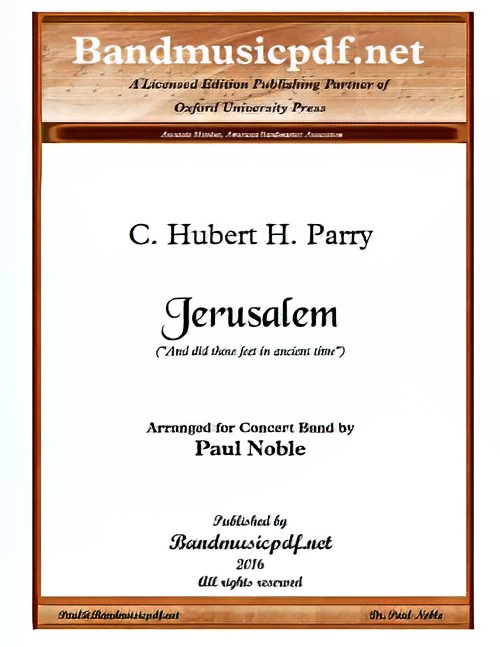 £75.00
£75.00Jerusalem (Concert Band - Score and Parts) - Parry, Hubert C. - Noble, Paul
Possibly the most English of all hymns, Jerusalem, with words by William Blake and Music written by Sir Charles Hubert Hastings Parry, by many is considered to be the unofficial anthem of England. Interestingly, by some within the Church, Jerusalem they say is in fact not a hymn due to it not being a prayer or praising God. As such it has been removed from hymn lists, most notably at Southwark Cathedral.
Estimated dispatch 7-14 working days
-
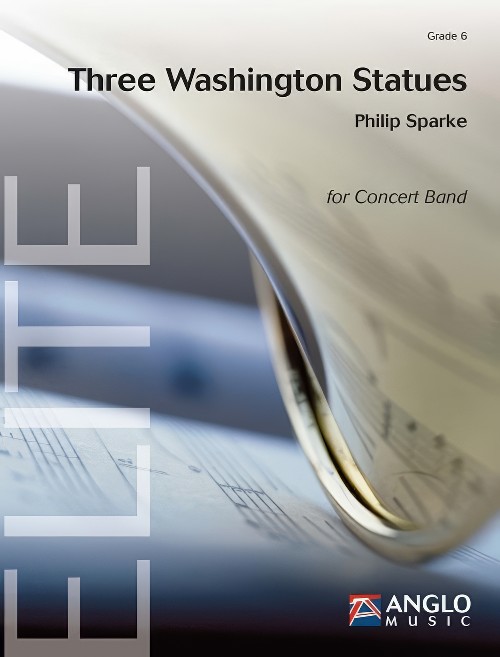 £164.99
£164.99Three Washington Statues (Concert Band - Score and Parts) - Sparke, Philip
Three Washington Statues was commissioned by the United States Army Band "Pershing's Own", led by Colonel Thomas H. Palmatier. Washington D.C. contains some of the world's most iconic monuments, memorials and statues. Philip Sparke has chosen three of these as the inspiration for this piece: 'The Lincoln Memorial' in the form of a Greek Doric temple in which the composer depicts the grandeur of this monument; 'The Martin Luther King, Jr. Memorial' on which steps the iconic speech 'I have a dream' was given - the music is both reverential as well as powerful referring to Martin Luther Kings' speech; and the 'Encore' statue in memory of the world famous African-American composer, pianist and bandleader Duke Ellington. In this final movement, Philip Sparke catches the virtuosic, energetic and unique dynamism of Ellington's' music. Three Washington Statues was commissioned by the United States Army Band "Pershing's Own", led by Colonel Thomas H. Palmatier. Washington D.C. contains some of the world's most iconic monuments, memorials and statues. Philip Sparke has chosen three of these as the inspiration for this piece: 'The Lincoln Memorial' in the form of a Greek Doric temple in which the composer depicts the grandeur of this monument; 'The Martin Luther King, Jr. Memorial' on which steps the iconic speech 'I have a dream' was given - the music is both reverential as well as powerful referring to Martin Luther Kings' speech; and the 'Encore' statue in memory of the world famous African-American composer, pianist and bandleader Duke Ellington. In this final movement, Philip Sparke catches the virtuosic, energetic and unique dynamism of Ellington's' music.Duration: 8:45
Estimated dispatch 7-14 working days
